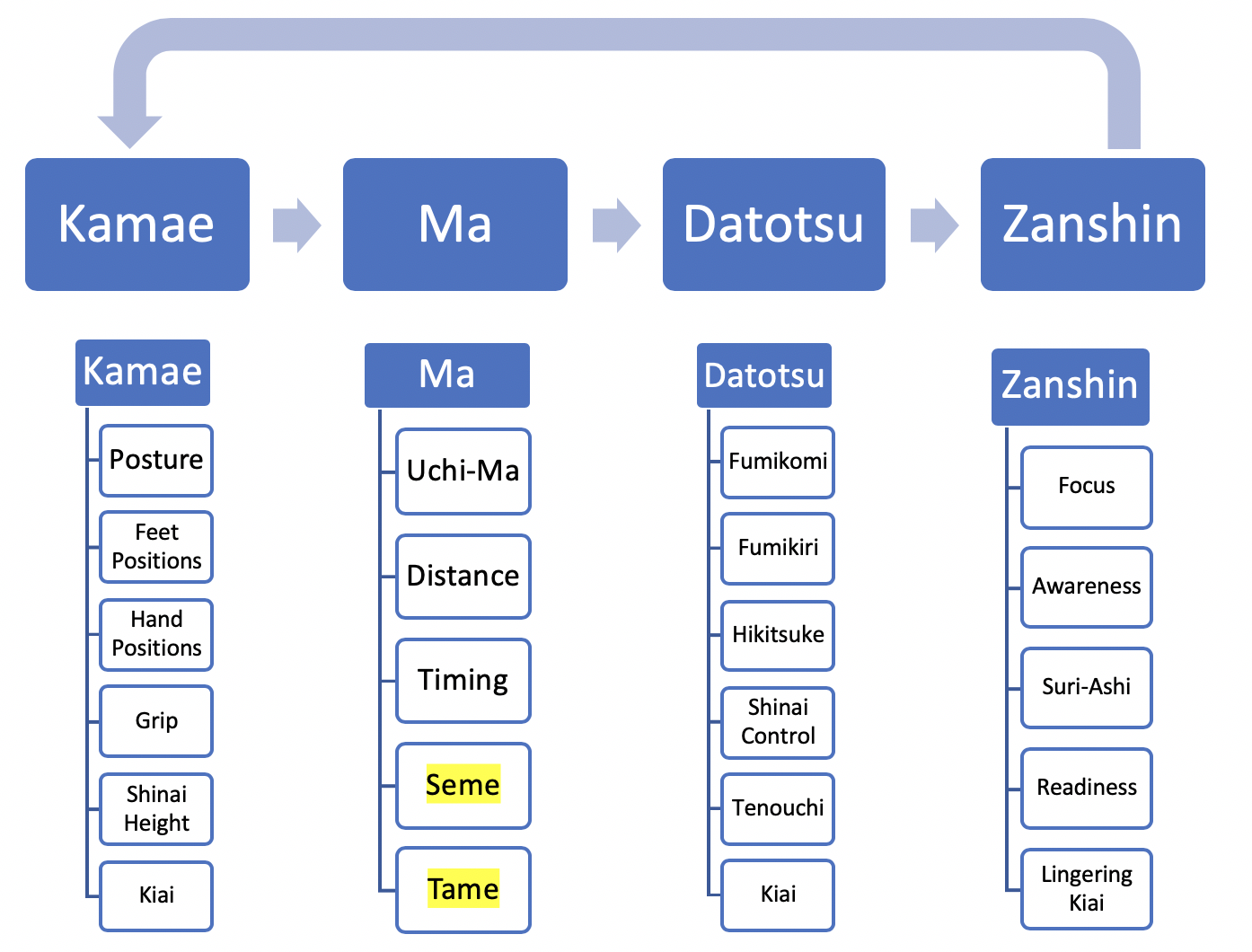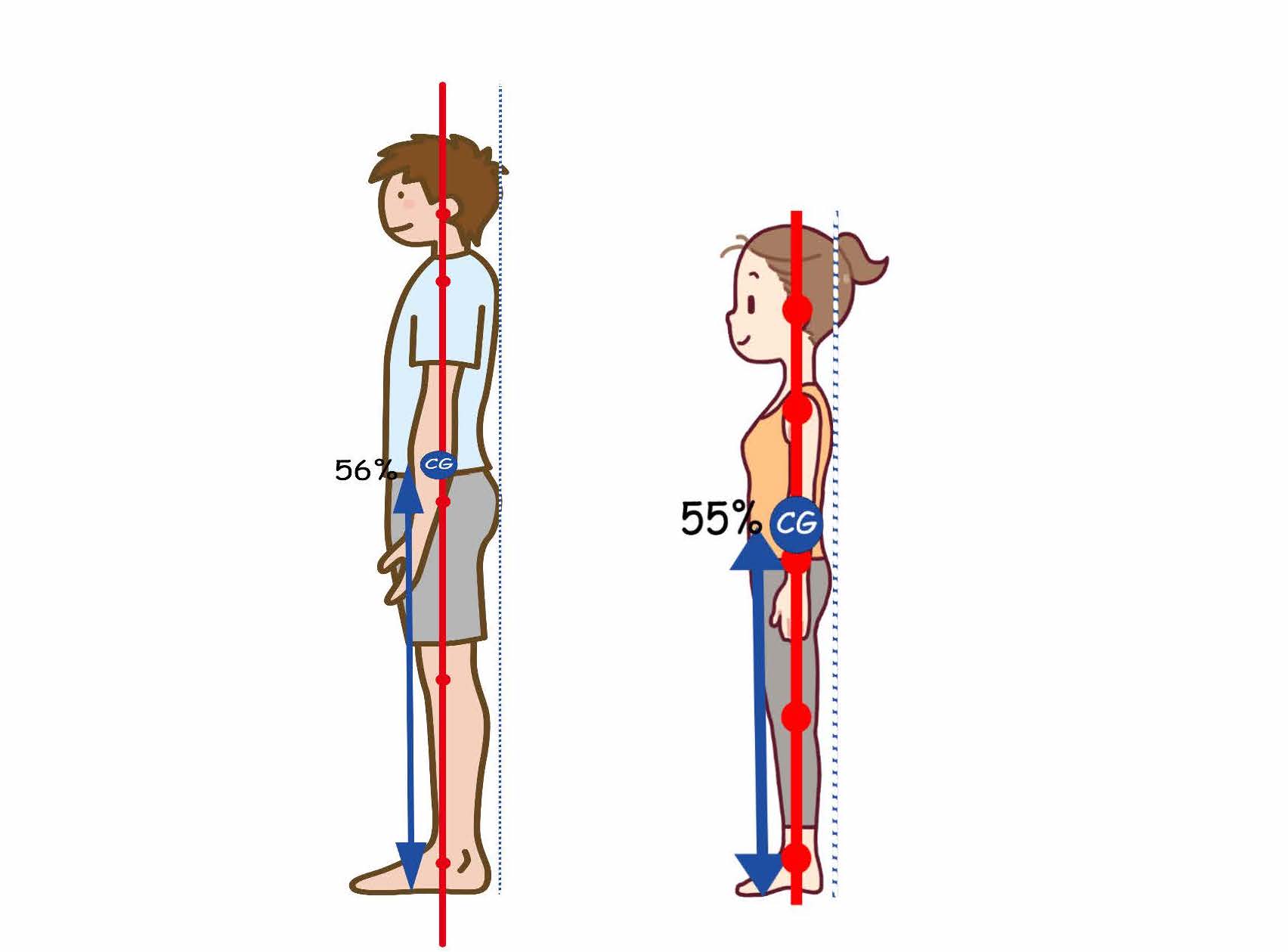You Got It!
Kendo guide for the intermediate
Are you going for 1 dan? Or 2 dan? Or 3 dan? This page is for you. The concept of this course is very simple.
"If you know the requirements to pass these exams, your kendo should improve."
The question is...
"Do you know the requirements?"
Kendo Basics
When you are asked what the kendo basics are, what would be your answer? Big strikes? Ki Ken Tai Icchi? You are right about them. You are going to be a dan holder. And if you are going for 3-dan, you are one grade before 4-dan, which makes you "sensei" (at least in USA). That is why only those who have great 3-dan skills and also ōji-waza can pass 4-dan.
The Exam Will Get Only Tougher
Let's go back to the kendo basics. Kendo basics consists of 3 things.
- Etiquettes/Manners (Reihō)
- Appearance (Chakusō)
- Kendo Movements
Basically, you should look cool and act respectfully. And also you should perform the kendo movements properly. Then you are going to pass these exams. If you look sloppy, act crazy or perform the kendo movements improperly then you have less chance to pass your exam. Here I would like to talk more about the kendo movements.
The Flow of Kendo Movements

As you know in kendo we need to have a good kamae. And you need to know about the distance or "ma". "Ma" also means timing in Japanese so you need to know about when you should execute your strike. You can say it is an opportunity. And you execute a strike/thrust or "datotsu". And followed by zanshin. This doesn't end here. You must go back to kamae.
Kamae
Kamae consists of
- posture,
- feet positions,
- hand positions,
- grip,
- shinai height and
- kiai
Everyone has different body shapes so I cannot speak for everyone. And I am sure that you have a teacher so consult your teacher with these points. But remember the definition of good kamae.
"A good kamae is from which you can execute your strike whenever you need to."
Ma
Ma can mean distance and timing in Japanese. Ma as the distance you need to know
- tōma (too far to reach your target)
- chikama (too close to strike)
- Issoku ittō no ma (when you take a step forward, you can reach your opponent)
- uchima (striking distance)
There are
- shokujin no ma (your shinai and your opponent's shinai touch) and
- Kōjin no ma (your shinai and your opponent's shinai cross).
If you remember these terms, you will understand what Japanese senseis teach when they visit your dōjō.
Uchima: Now the most important thing for your to know the distance of your own striking distance, uchima. If you don't know that you will have a huge problem. You cannot strike a target with the proper part of the shinai, which is monouchi. In other words, as long as you know your uchima, you can control the distance between you and your opponent so you can strike them but they cannot strike you.
Anyway, if you don't know your own uchima, you cannot even learn techniques. So know your distance as quickly as possible.
Now when you know your physical striking distance, start studying the timing to strike. Even when you are in your uchima, you need to know when to strike. As you advance, it only gets more complicated. But at least by 3-dan, know your uchima and timing to strike.
* Seme and Tame are something you should worry about later. You need to start understanding seme for your 4-dan and tame for your 6-dan exam.
Datotsu
Datotsu (打突) doesn't only mean "strike". It also means "thrust". Theda part is "strike" and the totsu part is "thrust". The common problems regarding the datotsu are...
- Coordination of strike and footwork (KI Ken Tai Icchi)
- Tenouchi
- Fumikomi
- Hikitsuke
- Kiai...
Basically these are the main components of datotsu. So you need to have
- Fumikomi
- Fumikiri
- Hikitsuke
- Shinai Control
- Tenouchi
- Kiai...
Zanshin
Zanshin is mental and physical preparation. In kendo, we have an opponent. We need to prepare to fight. Even after your successful strike, you should prepare yourself for another attack. Don't see zanshin one of the criteria for a "point". From the moment you think it like that, then kendo becomes a sport.
This is another view of zanshin. This is my view of zanshin. In addition to the definition mentioned above, I see zanshin as etiquette. Even after you strike a target successfully, you shouldn't walk away from your opponent. You should pay the greatest respect to your opponent who did his/her best to fight you. Turn around and face to your opponent with the most respect.
With such zanshin, your kendo remains as budō, the martial way.
Posture and Kiai
Posture and the level of your kiai should not be changed in this flow. *kiai is not only the volume of your voice but it is also the quality. Being loud is very important in kendo especially at kyu and 1-dan and 2-dan level. For 3-dan, start thinking about the quality at the same time of being loud. The quality will increase when you focus on the diaphragm breathing.
- Good Posture: Ears, shoulders, hip bones and ankles are on the same line. And your buttocks and the shoulder blades should be on the same line. Pay attention to your shoulder blades. CG stands for center of gravity. Many sources (Japanese and English) shows that the center of gravity for male is located about 56% of the height from the ground. For female, it is located about 55% of the height from the ground.
 Good Posture and Center of Gravity
Good Posture and Center of Gravity- Kiai: Quantity and Quality. Work on the loudness and then work on quality. What is quality. It is loud but it will fill you with good energy and you can stay focused. Your breathing is smooth. You feel that your body and mind are harmonized. Kiai is well related to your posture. Have a good posture and learn the diaphragmatic breathing (see below for the diaphragmatic breathing).
Kendo Guide for The Intermediate
Table of Contents
Are you ready to go to the next steps? Know what you need to do. Not what you want to do.
- Requirements for 1-dan, 2-dan and 3-dan: Now you will know what you need to do for your exam!
- Understanding of Seme: Before you take your 3-dan exam, you should understand the concept of seme. Do you really know what it is?
- A Battle Strats Before Fight: When does your battle start? When you bow to your opponent? When you sit in sonkyo? Very important mental preparation for the improvement of your kendo.
